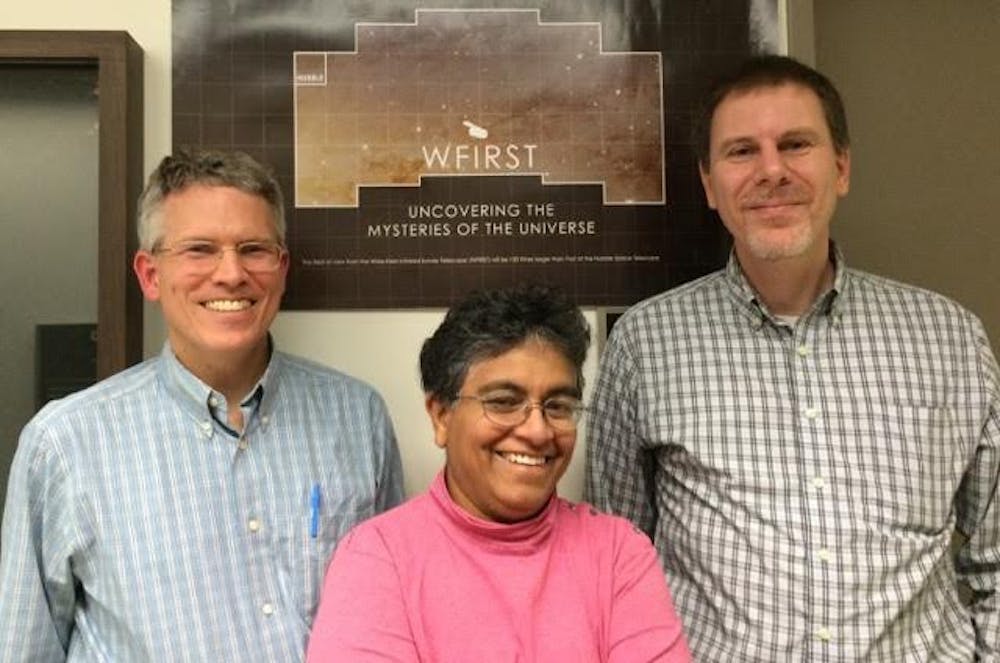After being selected to research with NASA’S new Wild Field Infrared Survey Telescope (WFIRST), ASU astrophysics professor, James Rhoads said he looks forward to a frontier of science.
“I want to learn about how the universe works and I want to have fun while doing it,” Rhoads said. “Part of my interest is to push the limitations of human knowledge.”
Rhoads' goal is aligned with the five ASU astrophysicists selected to work with NASA's Wild Field Infrared Survey Telescope.
James Rhoads and other scientists in the ASU Department of Earth and Space Exploration, Sangeeta Malhotra, Rogier Windhorst, Rolf Jansen and Vithal Tilvi, set out to utilize the latest in NASA’s technology for their ongoing research of the earliest galaxies in the known universe.
Rogier Windhorst, a professor at ASU's Department of Earth and Space Exploration, said this stage of research with WFIRST is the next leap in their field.
“It’s going to be very important as the sequel to Hubble,” he said. “It will tell us where we come from. It can tell us why stars are stars, and why planets are planets. This can give us a complete census of the cosmos.”
With many of the team’s members previously researching with the Hubble Deep Space Telescope, the team is no stranger to this research and with the new, advanced technology their work has been accelerated.
“Whatever you can do with the Hubble, you can do with this new field 200 times over, which means 200 times the science," Rhoads said.
However, Rhoads said a previous lack of technological development had once limited new discoveries.
“When I was a graduate student in the ‘90s, the cameras we worked with had 1/16 of a megapixel," Rhoads said. "This telescope will have about 4,500 times more power.”
Sangeeta Malhotra, a professor at ASU's Department of Earth and Space Exploration, said WFIRST’s technology is a huge boost for the team.
“With one view, we can see thousands of galaxies,” she said. “Imagine the difference between looking at 10 people, and conducting a whole survey.”
Any scientific venture’s purpose can be brought into question. Anyone can ask the value of learning about galaxies so distant no person can reach them. Because of this, Malhotra said the team knows its research is vital.
“For one, when we look at these very distant galaxies, it can tell us how typical or atypical we are,” Malhotra said.
Rhoads said the new technology will help the team answer common scientific questions.
“People are curious about their origins,” Rhoads said. “These sorts of questions are part of the scientific approach to learning that.”
Rhoads said the team members have found that astronomy is the splendor of space and mathematics.
“I like the pure beauty of physical science and that you can use physical laws and science to explain the things you see.” Rhoads says.
Malhotra said learning about space can feel empowering.
“When we look at these very different galaxies, it’s very humbling, but in some ways it is very empowering,” she said. “We feel small, but I also get a feeling of getting lost in the glory. It’s amazing — you see this huge milky way going across the sky.”
Though the team has been selected, the new telescope won’t be sent into space until 2024. Until then, it’s just a matter of preparation.
Reach the reporter at Ethan.Millman@asu.edu or follow @Millmania1 on Twitter.
Like The State Press on Facebook and follow @statepress on Twitter.




